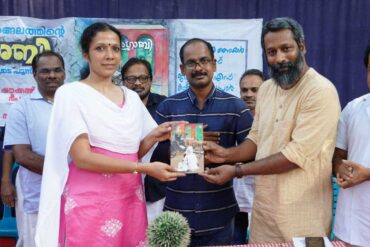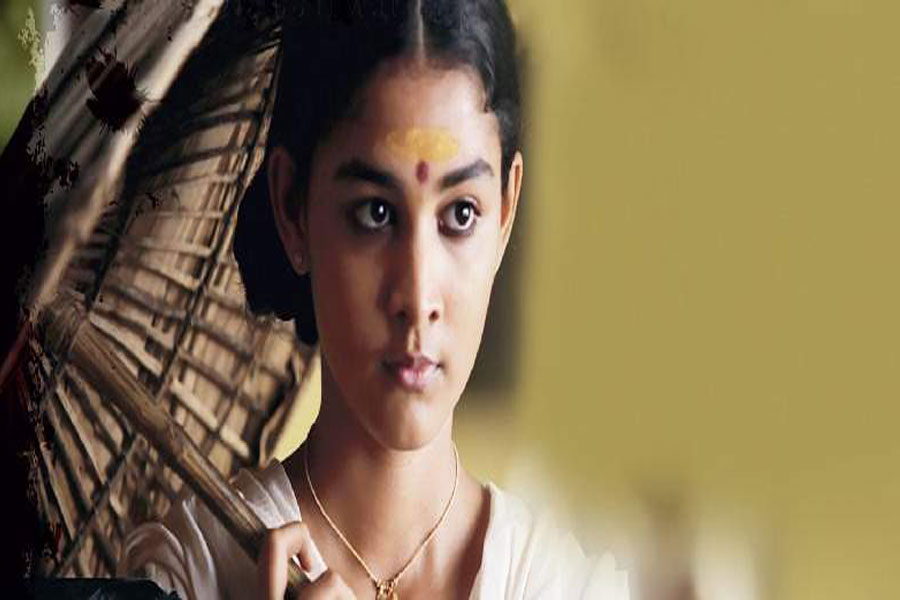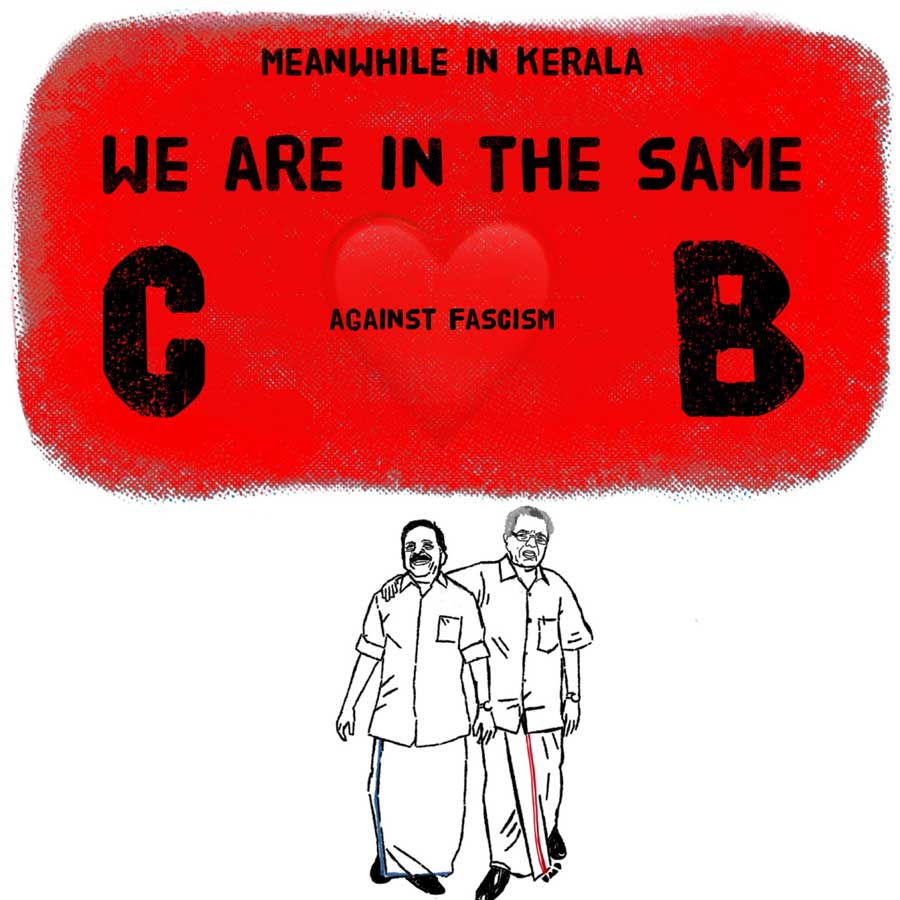More than a century after the sensational excommunication of Kuriyedathu Thatri and a very large number of men whom she allegedly reported to be her paramours shook the aristocracy of the Hindu kingdom of Kochi, the story continues to haunt the imagination of Malayalis. Her story of revenge has invited many interpretations. These interpretations take place in both high literary forums as well as in popular culture.
Lalithambika Antharjanam, one of the earliest women to gain recognition in the field of Malayalam literature, retold Thatri’s story, hailing her as the Goddess of Retribution who struck at the roots of the rot that had beset traditional Malayali Brahmin life. There have been prurient retellings that exploited the pornographic possibilities of the tale, turning it into a series of sexcapades of a cloistered, high-caste woman.
Modernist retellings, which include Madambu Kunhukuttan’s Outcaste, have cast Thatri as the embodiment of cosmic female energy sweeping away the decadence of the Brahmins and preparing the ground for new beginnings, or as the embodiment of aesthetic refinement whose lust was for art, not the male body.
The event of 1905
The event that inspired Outcaste was the smarthavicharam, or trial, of the high-born Namboodiri Brahmin woman or antharjanam named Thatri (Savitri) of the illam (a Namboodiri homestead) called Kuriyedathu, in 1905. In the course of the trial, Thatri named sixty-four paramours, including scions of the most esteemed and powerful families of the Malayali Brahmin aristocracy besides Nair and other Sudra men, in her testimony. The extraordinary nature of the case prompted the Raja of Kochi to allow a purushavicharam in which the accused men were allowed to cross-examine Thatri. But no one escaped. All sixty-four, along with Thatri, were excommunicated.
The Malayala Manorama covered the case in detail in a series of reports from June 1905 until mid-1906. The case severely jolted the idea of the antharjanam (literally ‘indoor-people’, a reference to their extreme confinement to the interiors of the illam) as meek and pious and with no connections whatsoever to the world outside. According to reports in the Malayala Manorama, this woman appeared unrepentantly ‘sinful’, calculating, ruthlessly bold and outspoken, someone who could argue ‘like a barrister’ and defeat her opponents. The Malayala Manorama felt obliged to explain:
In earlier times, human beings were much less crooked and false. In those times if antharjanams happened to commit some folly out of foolishness or innocence, they would readily confess…they had no intention of deliberately defiling anyone. The antharjanams subjected to smarthavicharam these days must be smooth operators.
The rumour was that she collected information about the moles, discolouration, warts and scars on her paramours’ genitalia as incontrovertible evidence that they had had sex with her. After the trial, she was excommunicated along with the men she named and was reportedly sent to Coimbatore, and was never heard of after. There have been other rumours that claimed that a popular Malayalam actor of the mid-twentieth century was her granddaughter, a claim which she has denied.
The excommunication of Nair and other Sudra men led to a flurry of protests against the Malayali Brahmin orthodoxy and the active encouragement of it by the ruler of Kochi from the progressive sections of Kerala society.
The orthodox Namboodiri Brahmin community interpreted smarthavicharam quite differently. For them, the smarthavicharam was a procedure that restored to the illam an ‘original purity’ lost in the sexual misconduct of its members. This purity could only be regained by either punishing the transgressors or acquitting the antharjanam. Far from signifying a lack, a failing or a state of decadence (as it did to the newspapers), the successful conclusion of existing smarthavicharam could only signify the continuing efficacy of the mechanisms to regulate sexual conduct among Malayali Brahmins. It was an extraordinary ritualized ‘anti-trial’, the aims of which were not so much justice for all parties as a confession of guilt from the accused woman. It suspended the human stature of the accused antharjanam until proven innocent. In the period of the vicharam, she was referred to as ‘sadhanam’, translated here as the Object, but in strict terms, ‘instrument’, or ‘means to an end’. Confined to a special chamber, she was subjected to questioning by the authorities—the smarthans and representatives of the community and the King—until she confessed.
The confession was the only way a conviction could be obtained and the trial would continue till then. Reformers in the community pointed out that since the trial involved feasting every day, it could ruin the family if the accused woman did not confess soon. And so, they alleged, the accused woman was subjected to violence to make her confess early. Once the confession was obtained, the woman and the men she named would be excommunicated through a series of very dramatic rituals and she would be considered dead. Any excommunicated Namboodiri, however, could seek a chance to prove his innocence through getting a pampu—a ‘letter’ from the relevant authority granting such an opportunity—but the woman was cast away permanently.
In the Thatri incident, few men escaped. Though excommunicated, some did manage to secure a share of property from their families and so did not suffer penury, but the prestige of the Brahmin aristocracy was definitely dented. Soon after, in 1908, the reform movement that sought to modernize the Namboodiris, the Namboodiri Yogakshema Sabha, was formed.
Traditional Life in the Illams
The Malayali Brahmins held considerable political and cultural authority and material dominance through their grip over the brahmaswam and devaswam lands (granted to Brahmins and temples respectively) until the twentieth century. Despite the rise of powerful rulers like Marthanda Varma and Saktan Tampuran in the eighteenth century, and unsettling events like Tipu Sultan’s invasion of Malabar, they managed to preserve much of their authority in Malayali society well into the heyday of British power.
As the established elite, the Malayali Brahmins did not take kindly to the coming of colonial ideas and institutions; indeed, this appeared as a formidable threat. Perhaps this is a partial explanation of their early reluctance to relate to ideas, institutions and practices that accompanied colonial dominance, documented in both popular ‘Namboodiri’ stories and accounts by colonial administrators and other contemporary observers. The Brahmins of Kerala were uniquely different from Brahmins elsewhere in other respects as well. This was especially true of the anacharams—observances unique to Malayali Brahmins, sanctioned by a text attributed to Sankara, the Sankarasmriti.
Over a millennium, there developed in Kerala an elaborate and sophisticated set of social arrangements that preserved their exclusivity and authority and simultaneously allowed them to relate differently with different groups—closely interact with some and maintain their distance from others, extracting different sorts of material gain and services from each. Thus in the traditional illam or mana (the Malayali Brahmin joint-family homestead and also the lineage that was normally coterminous with it), everyday life was inconceivable without the services of the Nair adiyar (the servant-class), yet strict rules were laid down which regulated the interaction of the Malayali Brahmins with them.
Their unique system of primogeniture in joint families allowed only the eldest son—called the moos—to marry within his own caste, and allowed younger males to seek marital alliances with women of the matrilineal Kshatriya castes or Sudra castes, like the Nairs or the Ambalavasis, known as sambandham. Sambandham alliances were considered by Malayali Brahmins to be beyond the domain of kinship and children of such unions were members of their mother’s families, with no formal claims upon their father’s. As for the jatis lower down, strict and complicated rules of untouchability and unapproachability preserved the exclusivity of Malayali Brahmins. Within their fold, too, relations were regulated to maintain strict hierarchies. Such a complicated system of hierarchies served to regulate a great deal of diversity, much of which set the Malayali Brahmins apart from their counterparts elsewhere—they ranged from royal families such as those of the Rajas of Edappally and Chempakaserry to impoverished temple priests.
One of the major axes of internal regulation among the Malayali Brahmins was undoubtedly sex. Within the illam, relations between men and women and their everyday routines were carefully delineated. Women had to observe elaborate seclusion and they travelled fully covered, virtually invisible, wearing the cloak (putappu) and holding the large cadjan umbrella (kuda). Many male reformers have remarked that a naked and brutal sort of patriarchy operated in the illam, and that a powerful if subtle network of reminders worked tirelessly to instil in women a sense of inferiority right from their infancy.
Polygamy was permitted to the eldest son of the illam, who as we have seen, was alone allowed to marry from his caste, as a male heir was indispensable. Widow remarriage was proscribed; indeed, the plight of young widows and antharjanams married off to men on their deathbeds (who, the reformers often pointed out, married these young girls sometimes to facilitate the marriages of their daughters!) was to be frequently evoked in defence of radical Namboodiri reformism. Women could not inherit land, and so their dowry was given as moveable property.
Yet one must remain cautious about attributing to the antharjanams the sort of passivity and meekness that twentieth century observers and reformers saw. Antharjanams, especially among the Malayali Brahmin aristocracy, often obtained some knowledge of letters; pre-pubertal marriages were uncommon and were not sanctioned by custom. Everyday life in illams was organized through a highly complex set of rules of conduct upholding various hierarchies. Sex difference was certainly important, but not the sole basis upon which this structure of regulation rested; considerations of age, position in the kin network and intra-jati hierarchy, marital status and other factors were also crucial. The very structure of regulation itself permitted the existence of potentially subversive spaces.
The antharjanams’ extreme seclusion, the practice of their travelling without husbands escorted by servants, the extreme difficulties—material and otherwise—in conducting the smarthavicharam, all left spaces in which the rules ordering everyday life could be potentially upturned. To modern observers, the presence of such spaces indicated the ‘decay’ of the community. Indeed, in the early twentieth century, in the wake of the Kuriyedathu Thatri case, the Malayala Manorama was raising the alarm that the women and the servant-class in the illams were colluding against the men, and that breaches of chastity were on the rise among antharjanams, pleading that the patriarchy among the Malayali Brahmins should be reinstated on more modern, stronger foundations.
Smarthavicharam and the Suffering Antharjanams
During my research into the modern language of binary gender in the early twentieth-century Namboodiri reform movement, I collected news reports of several smarthavicharams that were conducted at that time, and also documented memories of Malayali Brahmin women and men who recalled the stories of such incidents that circulated in their kin circles. Interestingly, I found that they did not always conform to the figure that dominant Namboodiri reformists upheld of the passive and suffering antharjanam who lacked all individuation; rather, the figures that emerged from these sources were closer to the fictional antharjanams who appear in the early short stories of the first generation Malayali feminist author, Lalithambika Antharjanam, stories of women who suffer within the illam but are neither passive nor incapable of strategizing.
In one instance, for example, the accused woman confessed that she put poison in her husband’s milk, and confessed only because her daughter had consumed it. In another, a young woman had a lover who regularly visited her in secret. The local community tried several times to catch him but could not find him anywhere in the illam even after repeated inspections. Each time the men from the community entered the inner quarters of her illam to check, she would stand in a dark corner of a room behind her large cadjan umbrella, hidden from the view of ‘alien’ men, as was expected of her. But after many such inspections, one of the inspectors noticed that there were four feet under the umbrella, instead of the expected two, and the culprit was caught. The woman left with him after excommunication.
In a third account, a woman sought to send money and valuables to a non-Brahmin lover with the active help of Nair maidservants. There were even love stories—for example, in Kottayam, a young girl of an illam fell in love with a Nair student at CMS College. He was a lodger in their outhouse. Her father conducted the smarthavicharam, but immediately thereafter arranged her marriage with the young man, endowing her with a handsome dowry, finding her husband a paying job and gifting the couple a house to start their new life in.
But the most intriguing account I heard was from a younger brother to some men who were excommunicated after Thatri named them, which seemed to strip the event of its mystery, but appeared quite realistic to me. According to him, the entire event was stagemanaged by the King of Kochi, a known diehard conservative, and many senior Namboodiris of the leading aristocratic houses who wanted to eliminate the younger men who were starting to demand modernization and question their authority. Thatri, who was apparently known to have several lovers and was on the brink of being ejected from the community anyway, was persuaded to be the centre of a trial and supplied with details of sixty-four men (the number sixty-four being endowed with special significance in the Brahminical traditions was apparently chosen for effect), maybe even more, and asked to recite them during the trial. Since she was being supplied with information through the agents of the state, she was undefeated in the purushavicharam as well. In other words, Thatri’s fabled memory, which recalled intimate details of encounters and physical marks, was not even real, according to this account. My informant claimed that this is the reason why so many younger males from leading Brahmin families were on her list. Thatri was sent away immediately and handsomely rewarded to stay untraceable. Even though they may have engineered the response to the trial, it was a wake-up call for the more conservative elements of the community: the effort to modernize the community began in right earnest precisely after to stall any further disorderly moves by those who were chafing under hidebound conventions and restrictions.
Now, I cannot say if this is the ‘true story’ of Kuriyedathu Thatri although it provides a better explanation for some of the more mystifying aspects of the incident such as about her memory; there is no way one can really prove it to be true. All one can say is the story keeps growing, and as a tale of revenge and of the fall of an oppressive order, it will be retold as long as patriarchy continues to structure our lives in Kerala and elsewhere.

Excerpted with permission from the appendices of Outcaste, written by Madambu Kunhukuttan and translated by Vasanthi Sankaranarayanan; Published by Aleph Book Company
Cover Image: A still from the 2015 Sanskrit film Ishti, a sharp critique of the Namboodiri community.







